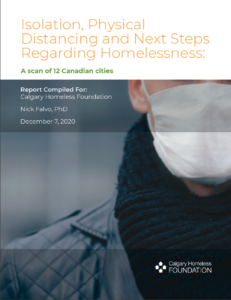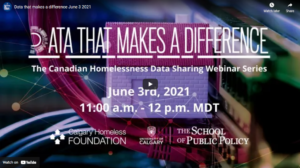Congratulations to Ron Kneebone, Meaghan Bell, Nicole Jackson and Ali Jadidzadeh on the release of the research paper, Who are the Homeless? Numbers, trends, characteristics of those without homes in Calgary. University of Calgary, The School of Public Policy SPP research Papers. Volume 8. Issue 11. March 2015
The data contained in the report informed Calgary’s Updated Plan to End Homelessness and the 14 actions identified as instrumental to ending homelessness in Calgary.
To download the Research Paper, click HERE.
To download a copy of Ron Kneebone’s presentation at the media conference, click HERE.
For Immediate Release
The School of Public Policy releases surprise findings on homeless: Critical for understanding public policies needed to resolve Issue
Calgary – In 2008, Calgary was the first city in Canada to institute a 10-year plan to end homelessness. The plan was introduced in part due to the steady and rapid growth in homelessness in the city since 1992. Since 2008 growth in the number of homeless people has stopped despite a rapidly growing city. The number of people enumerated as homeless by point-in-time counts has fallen from 304 persons per 100,000 population to 256 persons per 100,000 population in 2014, a drop of more than 15 per cent.
According to a report released today by The School of Public Policy and author Ron Kneebone, the report looks beyond simple counts of the number of homeless people and examines how people who are homeless use emergency shelters. Tracking shelter use over a five year period by nearly 33,000 individuals, discovered that contrary to what might be thought to be true, the great majority (86%) of people who use emergency shelters in Calgary do so very infrequently and for only short periods of time. Kneebone states “only a tiny minority, just 1.6% of all shelter users, stayed in shelters for very long periods. These “chronic” users visited shelters an average of three and a half times and stayed a total of 928 days over the five years of our study, occupying one-third of shelter beds.”
Moving people who represent the 1.6% from emergency shelters into stable, supportive housing, delivers savings in the form of reduced interactions for these people with the criminal justice and health-care systems; savings that have been shown in other studies to significantly off-set the cost of supportive housing.
Planning to end homelessness has always been an ambitious goal. While the homeless serving community has made significant gains in understanding how best to solve the problem, greater effort may be required of local, provincial and federal policy makers to find ways of resolving the issue that is at the heart of Calgary’s homelessness problem; namely, the lack of affordable rental accommodations.
The paper can be downloaded HERE.
Media Contact:
Morten Paulsen
403.399.3377




